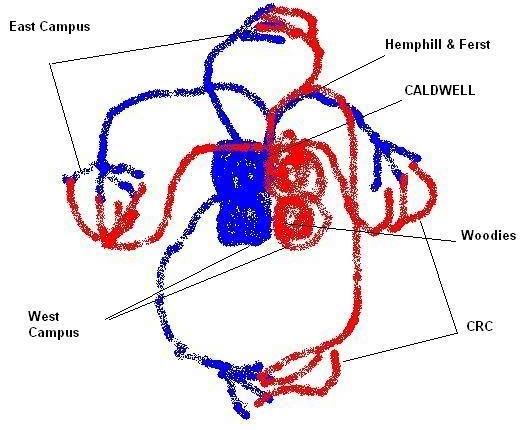Humans are atoms.
First, there are people with the weak van der waal forces. These are the flaky ones. On most days, they seem nice and cool. But don’t be deceived as these unsettled people are continuously fluctuating and forever conniving. One minute they’re with one person. Next minute, BAM! They're after another. Too bad people cannot resist their perpetual polar attraction, and so, succumb to their weak bonds. In my opinion, stay away from van der waals forces. Don’t bounce with these dispersion forces because they will just fall apart in a heartbeat. When it comes to polar people, what can be good?
Next, you have the dipole-dipole interactions. These aren’t much better. These people are not only polar, but what’s worse… they’re permanently polar. They are always starting trouble. Surely they can get into some high energy relationships, but do you really think they'll last if only partial charges are involved?
Moving on, the worse of the worse award definitely goes out to those engaging in metallic bonding. Sadly, these high energy-packed relationships sometimes seem to last longer than others. Not only do these people refuse to stick with one person at one time, they draw in a whole sea of the same type of people! What amazes me is how these relationships can be so easily manipulated and shaped, yet so hard to break. My advice on this - if you really want to conduct some temporary heat, go for it.
Once in awhile you might come across some icky situation that may or may not be preventable. Sh*t happens. You can end up engaging in complicated banana bonding that you can’t exactly break up easily. You’re with someone initially, an ordinary relationship. You’re happy. Before you know it, a third person comes along and twists the whole connection. Then you’re stuck. This middle man ends up bending the whole relationship. What a sneaky character. Like I said, sh*t happens. Shady stuff I tell ya.
You’re probably wondering now, “Ok, so what kind of bond should I engage in then?” Well the answer to this is probably debatable. Some may think you should go for some covalent action. In this case, go for someone with similar qualities and similar strengths, so you can share a mutual attraction that holds the relationship together. Some say you should go for your total opposite - engage in some ionic bonding. Find the one that’s everything you’re not. You’re each other’s better half. In this way, you complete each other. If you ask me, I say go for something in between. Nothing purely covalent or purely ionic - now that’s true chemistry right there.














